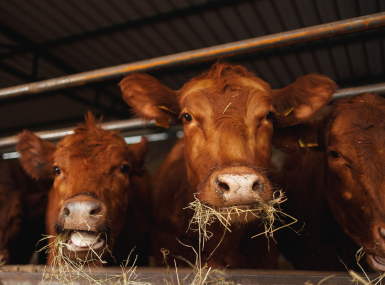U.S. House advances bipartisan legislation to address farm labor shortages
Author

Brett Mattson
Upcoming Events
Related News

Key Takeaways
On December 11, the U.S. House passed the Farm Workforce Modernization Act of 2019 (H.R. 5038) on a vote of 260-165. The legislation would provide relief to the agricultural industry’s ongoing labor shortage by providing a path to legal status for seasonal and migrant workers, streamlining the hiring process through the H-2A Visa program and increasing the quality and affordability of housing for farm laborers.
Many counties across the country rely on the agricultural industry, and those who work in it, to drive our local economies. However, counties often struggle to maintain the workforce needed for the industry due to restrictive federal regulations on farm labor hiring practices and a continued decline in rural housing options.
By simplifying the H-2A program and helping to address inadequacies in work housing, H.R. 5038 will ensure counties have a consistent and reliable workforce available for our farmers and ranchers.
Specifically, this bill would direct the U.S. Department of Homeland Security (DHS) to create an electronic platform for filing H-2A petitions, facilitate the processing of H-2A cases and provide agencies with a single tool for obtaining H-2A-related case information. The bill would also modify the method for calculating H-2A worker wages and open the program to year-round agricultural work with a specific allocation for the dairy industry.
In addition to improving the H-2A program, the legislation would also establish a program for agricultural workers in the United States to earn legal status through continued agricultural employment. In order to be eligible for the program, an individual must show at least 180 days of agricultural employment over the last two-years. After an applicant is accepted, the individual is provided a five-year renewable visa, which can be renewed at least 100 days in agriculture each year. Additionally, individuals participating in the program also have the option to earn Legal Permanent Resident (LPR) status. In order to obtain LPR status, an individual must pay a $1,000 fine and meet other criteria including number of years resided in the United States and number of years working in the agricultural industry.
On December 11, NACo sent a letter of support to Speaker Nancy Pelosi (D-Calif.) and Minority Leader Kevin McCarthy (R-Calif.) that expressed support for H.R. 5038 in order to strengthen our nation’s local agricultural economies.
The bill now heads to the Senate, where passage of the legislation remains unclear as lawmakers debate additional provisions including caps on worker’s wages and a proposed new calculation for determining their rate of pay.
NACo applauds the efforts of the House to pass this important legislation and will continue to work with lawmakers to ensure county priorities are included in final bill text.

Attachments
Related News

USDA and HHS release new dietary guidelines
On January 7, U.S. Department of Agriculture Secretary Brooke Rollins and U.S. Department of Health and Human Services Secretary Robert F. Kennedy, Jr. unveiled the new Dietary Guidelines for Americans, 2025–2030.

CMS announces Rural Health Transformation Program funding
On December 29, the Centers for Medicare & Medicaid Services (CMS) announced $50 billion in awards over 5 years to all 50 states under the Rural Health Transformation Program.

Senators introduce bipartisan UPGRADE Act to support small and rural public water systems
On December 15, Sens. Lisa Blunt Rochester (D-Del.) and Roger Wicker (R-Miss.) introduced the Unincorporated Partnerships for Grant Resources, Assistance, and Drinking Water Enhancements (UPGRADE) Act (S. 3465), a bipartisan bill that would strengthen federal support for small public water systems and helps unincorporated communities access clean and affordable water.